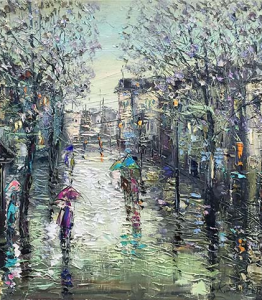The workmanship is an assorted scope of (results of) human exercises including inventive creative mind to communicate specialized capability, magnificence, enthusiastic force, or calculated ideas.
There is no commonly concurred meaning of what establishes art, and thoughts have changed over the long run. The three old-style parts of visual workmanship are painting, design, art auctions and architecture. Theatre, dance, and other performing expressions, just as writing, music, film, and other media, for example, intuitive media, are remembered for a more extensive meaning of the arts. In current utilization after the seventeenth century, where tasteful contemplations are principal, the expressive arts are isolated and recognized from obtained abilities as a rule, like the beautiful or applied expressions
What is Art :

The idea of workmanship and related ideas, like innovativeness and understanding, are investigated in a part of reasoning known as aesthetics. The subsequent craftsmanships are concentrated in the expert fields of craftsmanship analysis and the historical backdrop of art. In the viewpoint of the historical backdrop of art, creative works have existed for nearly as long as mankind: from early pre-notable workmanship to contemporary craftsmanship; in any case, a few scholars feel that the run of the mill idea of “imaginative works” fits less well external current Western societies. One early feeling of the meaning of workmanship is firmly identified with the more established Latin significance, which generally means “ability” or “speciality”, as related with words, for example, “craftsman”. English words got from this significance incorporate antique, counterfeit, guile, clinical expressions, and military expressions.
Over the long run, scholars like Plato, Aristotle, Socrates, and Kant, among others, scrutinized the importance of art. Several exchanges in Plato tackle inquiries concerning workmanship: Socrates says that verse is enlivened by the dreams, and isn’t reasonable. He talks enthusiastically of this, and different types of heavenly frenzy (intoxication, sensuality, and dreaming) in the Phaedrus (265a–c), but then in the Republic needs to ban Homer’s extraordinary graceful craftsmanship, and giggling too. In Ion, Socrates gives no trace of the dissatisfaction with regards to Homer that he communicates in the Republic. The exchange Ion proposes that Homer’s Iliad worked in the old Greek world as the Bible does today in the advanced Christian world: as supernaturally enlivened abstract workmanship that can give moral direction, if no one but it very well may be appropriately interpreted.
Its Various Sides :
Concerning the abstract workmanship and the melodic expressions, Aristotle thought about the epic verse, misfortune, satire, Dithyrambic verse, and music to be mimetic or imitative craftsmanship, each differing in impersonation by medium, object, and manner. For instance, music mimics with the media of musicality and agreement, while dancing mirrors with mood alone, and verse with language. The structures likewise contrast in their object of impersonation. Parody, for example, is an emotional impersonation of men more regrettable than normal; while misfortune mimics men marginally better than normal. Finally, the structures contrast in their way of impersonation—through account or character, through change or no change, and dramatization or no drama. Aristotle accepted that impersonation is normal to humankind and establishes one of humankind’s benefits over animals.



